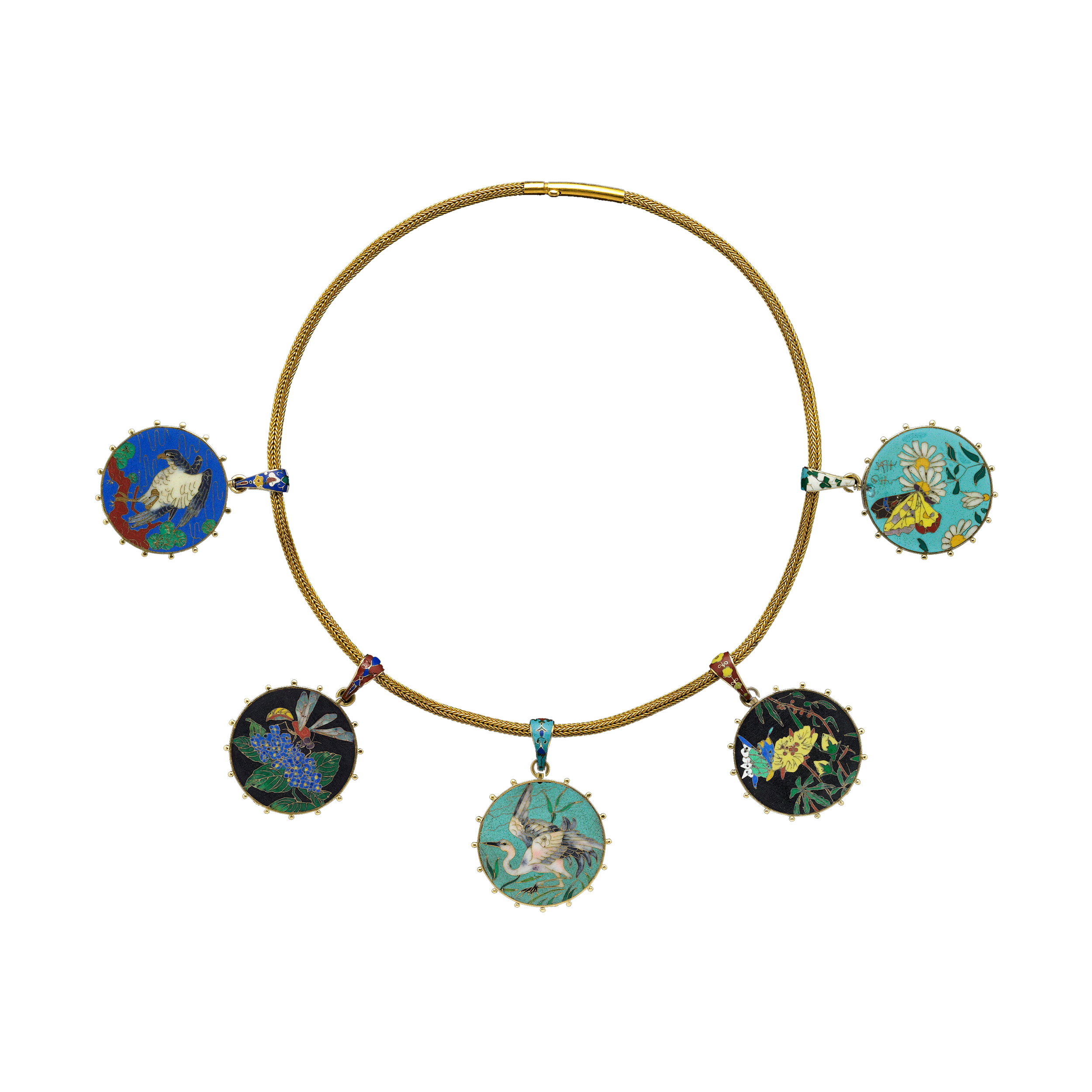
">
アントワーヌ・タール作のエナメル・ディスクを用いたファリーズ製ネックレス
| 作品名 | アントワーヌ・タール作のエナメル・ディスクを用いたファリーズ製ネックレス |
| 制作年 | 1870年頃 |
| 制作国 | フランス |
| 制作者 | アントワーヌ・タール(ファリーズ) |
| 素材 | エナメル、ゴールド |
作品説明
フランス製の19世紀中葉のエナメルを施したディスク付きネックレスはファリーズによるもので、プレイティッド・ゴールドのチェーンに提げた5点のラウンド・ディスクのペンダントは、それぞれ両面が様々な植物と動物のテーマで装飾されている。アントワーヌ・タールがアレクシス・ファリーズのために製作した多色のクロワゾネ・エナメルによるもので、花と葉の中にツルと昆虫、若いおんどりが描かれている。
解説
アレクシス・ファリーズ(1811-1898)による日本美術の発見は、クロワゾネ・エナメルを施したジュエリーの創造にインスピレーションを与え、彼は1869年にパリで開かれたユニオン・サントラル・デ・ボー・ザール・アプリケ・ア・ランデュストリ(産業への応用美術中央連盟)で展示した。
人々が感動させられたのは、自然から引き出された、そしてこのような大胆さと独創性で表現された植物と動物のモティーフによってだけではなく、エナメル細工における東洋のクロワゾネ技法に対するファリーズの熟練技によってでもあった。金属の表面にロウ付けされた細い繊細なワイヤーが異なったカラーのエナメルを区切る技法で、それらのエナメルは何度もの火入れと最終的な研磨の後に色を強めて顕れる。
このプロセスは非常に高価なために、お金持ちだけがこのスタイルのジュエリーやオブジェを購入することができた。しかし、彼らが着用した目的は、日本人の自然の見方に対する称賛のデモンストレーションとしてであったが、その自然観は、19世紀後半を通してヨーロッパにおける芸術上の趣味に革命をもたらした。これら5点の両面ペンダントは似て見えるが、全部で10点になるプラークは異なったもので、繰り返しはひとつもない。エキゾティックなものとファンタスティックなものを結び付けている、これらのファリーズのクリエイションは、この時代の最も独創的なジュエリーのひとつである。